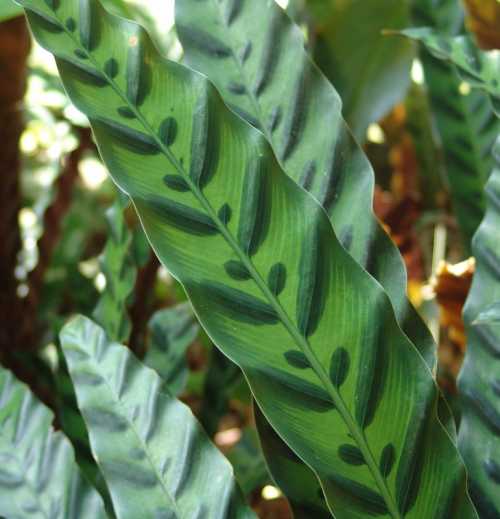Prayer plants are a common name for those who are fond of growing houseplants themselves. They are beautiful to look at, give healthy and positive vibes, and are definitely easier to maintain than most other houseplants. However, there may be times when we face issues with growing our prayer plants.
Prayer plant leaves turning yellow is the most customary of them. In the following article, we will look at all the probable reasons that contribute to yellowing of your prayer plant leaves, with some additional plant care tips to help you grow a yield that would last for years.
Prayer Plant Leaves Turning Yellow

Overwatering
One of the most common causes of prayer plant leaves turning yellow is excess watering or lack of a proper drainage system. Watering them adequately can be a hassle for many since the exact watering proportions are never known to anyone.
If you tend to water it when it is not asked for, you might be exposing it to risks of root rot and yellow leaves, something that is very harmful for the health of the plant in the long run. If you do not understand the appropriate quantity of water that your prayer plant needs, you can go the other way round to ensure that excess water is drained out properly.
You can switch to potting mixtures that give abundant drainage qualities or make holes in the pot for excess water to drain out. This helps in water clogging conditions too.
Low Humidity
Hailing from their native place, it is natural for prayer plants to expect humidity in their surroundings. This is because they seek out places that have high humid content since it sets the perfect pace for them to replicate their native conditions.
If your surroundings have insufficient humidity for a prayer plant to thrive, you should install a humidifier or create conditions that support natural humidity. If you prefer to keep them indoors, or see them becoming extra sensitive during winter months, then you would have to pay extra attention to meet their humidity requirements.
Lack of humidity can cause them to dry out at the edges, and can even deplete the water level of these plants. This can lead to discoloration of the leaves of the prayer plants. Yellowing of leaves due to low humidity can also be curbed by installing a humidity tray beneath your prayer plant.
Also Read: Best Potting Soil for Peace Lily Plant
Extremely cool temperature
Prayer plants are a fan of warm environments and cool temperatures can take their color, moisture, and other healthy materials away from them. Exposing your prayer plants to cool temperatures is one of the many reasons why the plant suddenly starts to turn yellow and discolor.
To avoid your plants from placing in cool conditions, always keep them covered or in front of a natural warm and light source so that you can immediately shift their environments in the face of an emergency.
Always keep a thermometer handy to measure the temperatures of the surroundings in which your plant is kept. Any temperature range below 55 degrees Fahrenheit is fatal to the health of the plant since they cannot tolerate the kind of frost.
It is recommended to place your plants in temperature not dropping below 60 degrees Fahrenheit for ensuring maximum efficiency of the prayer plant.
Nutrient deficiency
Plants need certain essential nutrients to survive and thrive in the long run. Iron is one such essential nutrient, deficiency of which can lead to your prayer plant leaves turning yellow. One of the easiest methods to spot if the reason is iron deficiency is to investigate if the plant is newly grown or has been there for a long time.
Yellowing of newly grown plant leaves is often a definite sign of iron deficiency. Either the iron composition of the plant is naturally low, or the deficiency has stemmed from the unusually high pH of soil. A high pH soil can be corrected by mixing the potting mixture with other soil material. However, if you want to increase the natural composition of iron in your prayer plants, using iron rich fertilizers will definitely show results.
Disease
Pest infestation or plant diseases caused by the infestation and perpetuation of pests is another reason that causes your beautiful prayer plant leaves to discolor and turn yellow. Spider mites and helminthosporium leaf spots are the most common causes of prayer plant diseases. Fungal diseases are the most common type of diseases that are found in prayer plants.
If the yellowing on your prayer plant leaves appears in the form of small spots instead of patches, the reason is fungal diseases. While it is difficult to prevent the spread of fungal diseases from one plant to other houseplants, an application of neem oil and other fungicides can be tried to get maximum results.
Also Read: Why Chinese Money Plant (Pilea) Losing Leaves | Falling Off?
Poor light and water quality
Not only the quantity of water matters, but the quality of water that is used to yield your plant is also important for it to thrive. Bad quality of water rinses the plant of its good nutrients making it essentially brown and crispy at the edges. While the edges become lifeless and brown, the texture of the leaf also deteriorates and they start turning yellow.
On the other hand, emphasis should also be placed on the light that the plant is getting. Exposing your prayer plant to too much direct sunlight will scorch the plant, and would deplete it of its colour, thus making it yellow. Do not let your prayer plant leaves burn under direct sunlight for long hours of time. This is one of the reasons for yellowing of the plant leaves.
Cucumber Mosaic Virus
The cucumber mosaic virus turns out to be a very specific causal factor of yellow patches that are visible on the leaves of prayer plants. One way to know that the yellowing of leaves has been due to the presence of the fatal cucumber mosaic virus, is to spot out the yellow patches.
If you can see the yellow patches near green healthy areas, the virus might be at work there. Once it gets in contact with other leaves, it destroys their ability to completely grow and nourish. This is because the virus is contagious. One way to get rid of this virus on the plant is to thoroughly wash the entire plant and then destroy it. Destroying the plant would make sure that the virus does not contaminate other houseplants.
Environmental stressors
Environmental stressors cause natural harm to your plant and they are the most difficult to get rid of, primarily because they occur naturally. Most of these stressors might not bother you, but they do have a negative impact on the health of the plant, thus making it yellow in color.
Excessive phosphorus or fluorine can burn the edges of leaves, extracting its natural color. When the leaf edges and the margins of the leaves burn, they leave a stash of yellow band on the leaves, hence the color.
Chlorosis is another environmental factor responsible for yellowing of prayer plant leaves. In either of these cases, you can begin by watering the plant with purified and good quality water, checking the plant for signs of root rot, and repotting the plant if necessary.
Also Read: Why Are My Fern Leaves Turning Brown?
Prayer Plant Care Tips
Prayer plant is very forgiving but is often seen getting ill from the environment it is placed in. To please your plant and to keep it healthy, you should follow the below mentioned care tips:
- Do not expose your plants to direct sunlight. Prayer plants enjoy bright sunlight, but direct exposure to it can cause rapid burns, causing them to scorch. This also depletes them of their moisture content and other essential nutrients. It is always preferred to keep your plants under shade, indoors, where they get medium light throughout the day. Do not keep them in dark places, or they’ll rot really quick.
- Insert your finger till the topmost layer of the soil, and then take it out. If it is damp and wet, avoid watering your plant. However, if you feel that the soil is arid and excessively dry, water it immediately in small proportions throughout the day. Do not fix a schedule for watering. Plants do not go by our schedule.
- During the spring and summer months, mist your plants often. If you are feeding them, do it once in a month through the use of liquid fertilizers. This will ensure that they have adequate nutrient intake while also confirming their humid conditions.
Conclusion
Some of the regular prayer plant varieties include Maranta, Calathea, Stromanthe, and Ctennathe to name a few. The variety of your prayer houseplant does not matter until and unless you are searching for causes and possible solutions for the leaves turning yellow. The aforementioned causes and care tips remain the same in all these prayer plant varieties and can be used with each of them. Additionally, you can also combine these solutions or increase their dosage for good and unique results.
